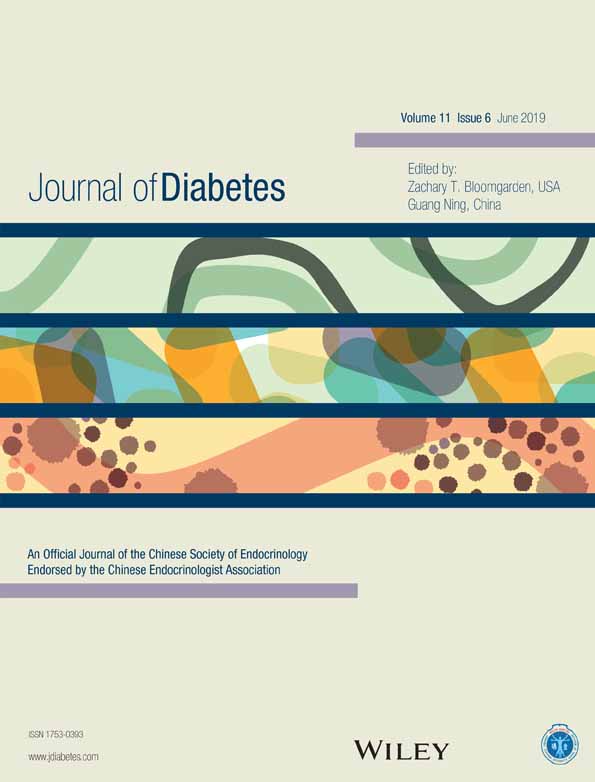Different-shaped curves for serum uric acid with and without diabetes: Results from China Health and Retirement Longitudinal Study
糖尿病与非糖尿病者中血清尿酸的曲线类型不同:来自中国健康与养老追踪调查的结果
Abstract
enBackground
Several studies have revealed conflicting results regarding the relationship between serum uric acid (SUA) and blood glucose concentrations. The aim of this study was to identify the shape of the curve between SUA and either fasting plasma glucose (FPG) or HbA1c in diabetic and non-diabetic participants.
Methods
This cross-sectional study of the relationship between SUA and diabetes and non-diabetes was conducted in 10 266 participants. Data from the national baseline survey of the China Health and Retirement Longitudinal Study (CHARLS; 2011-12) were used. Restrictive cubic spline regression and two piecewise linear regression models were used to detect non-linear trends and calculate the slope of each segment.
Results
After adjusting for all confounding factors in all subjects, an L-shaped relationship was found between FPG and SUA in males (β2 = 3.47, P < 0.01) and females (β2 = 5.84, P < 0.01), as well as between HbA1c and SUA in males (β2 = 0.10, P = 0.03) and females (β2 = 0.12, P = 0.02). In non-diabetic individuals, there was a positive linear correlation between FPG and SUA in females (β = 0.62, P = 0.02). After a diagnosis of diabetes, a negative linear relationship was found between SUA and blood glucose in males, and a nearly L-shaped curve was found in females.
Conclusions
An L-shaped association was found between SUA and blood glucose in both genders. Stratified analysis revealed an L-shaped curve only in diabetic females. Further studies are warranted to investigate the mechanisms of the association between uric acid and blood glucose levels.
Abstract
zh摘要
背景
目前一些文献研究血清尿酸(SUA)与血糖浓度之间关系显示结果不一致。本研究的目的是确定糖尿病和非糖尿病患者的SUA与空腹血糖(FPG)或糖化血红蛋白(HbA1c)之间的曲线关系类型。
方法
本横断面研究探讨了血清尿酸浓度与糖尿病和非糖尿病患者之间的关系,共纳入10266名受试者。数据来自中国健康与养老追踪基线调查(China Health and Retirement Longitudinal Study,CHARLS;2011-12)的结果。采用了限制性立方样条回归检测非线性趋势,采用分段线性回归模型进行线性拟合。
结果
控制所有可能的混杂因素后,我们在总人群中发现L型曲线关系不仅存在于FPG与SUA之间:男性(β2 = 3.47,P < 0.01)和女性(β2 = 5.84,P < 0.01),也存在于HbA1c与SUA之间:男性(β2 = 0.10,P = 0.03)和女性(β2 = 0.12,P = 0.02)。分层结果显示:非糖尿病个体中,仅女性FPG与SUA呈线性正相关(β= 0.62,P = 0.02);在糖尿病个体中,男性中SUA与血糖呈负线性关系,而女性中呈近似L型曲线。
结论
男性和女性中的SUA与血糖关系均呈L型分布。分层分析后显示仅在糖尿病女性中L型曲线仍存在。在后续的研究中我们需要进一步探讨尿酸与血糖水平之间的机制。




